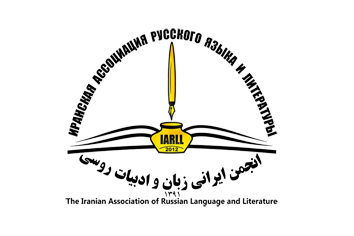About Laughter as A Way of Visualization in Dostoevsky
DOI:
https://doi.org/10.61186/iarll.19.125Keywords:
Dostoyevsky, the Funny, Humor, Visuality, Novel The Idiot, Novel DemonsAbstract
The article deals with the function of humor in Dostoevsky's prose. Humor is capable of combining grand and minor. This quality of humor is fully revealed in the texts of the Great Russian writer. A joke may reveal to the reader whole shafts of content. This function is carried out by a multitude of verbal alogisms of general Ivolgin, captain Lebyadkin and Madame Khokhlakov. The funny opens up gaps between what the character thinks he is and what he is. Humor in Dostoyevsky may serve to uncover a valuable content behind the funny and the negligible. The funny helps reaching a visualization of the characters created by the writer. The funny, which unexpectedly flashes in Versilov and Stavrogin, gives them sudden visibility. The characters of the novel The Idiot, who find Prince Myshkin funny, ascribe to the reader’s view a special keenness, not at all comical, but tragic. Laughter in the gamut of Dostoyevsky transpires as an essential color – one aiding him in his creation of the vibrant and multicolored picture of the world.
Extended abstract:
The author explores the function of humor in Dostoyevsky’s novels of his “Great Pentateuch”, such as “The Idiot”, “Demons” and “The Adolescent”. His humor still remains an issue that scholars have not yet fully resolved. It is not an easy task, since when we discuss the function of humor, we also speak about descriptive approaches and the way humor renders plasticity and visuality to Dostoyevsky’s prose. Plastic accents originate from collisions between opposite elements – the noble and low, the ugly and beautiful, the pathetic and grand. From this point of view, humor creates an ideal setting for visualizing the writer’s texts and introducing visualizing elements. For this, speech patterns are analyzed, as well as the techniques of structuring the characters in the novels “The Idiot”, “Demon” and others. Humor is flexible and dynamic. A joke may reveal whole shafts of content, be it interaction between the characters or interrelations between the author and the characters. This function is carried out by a multitude of verbal alogisms and incoherent and awkwardly sketched utterances of general Ivolgin, captain Lebyadkin and Madame Khokhlakov. The funny opens up the gap between what the character thinks of oneself and what he or she are in reality (lack of true self-respect in the liar Ivolgin, the ridiculous role of an enamored enthusiast not fitting Lebyadkin and the egotism and shallowness of Madame Khokhlakov). At the same time, humor may serve another function – to uncover valuable content behind the funny and the negligible. Thus, the spy Lebedev comically depicted in the novel “The Idiot”, turns out to be a profound interpreter of the “Book of Revelation”, a thinker and a historian. As was noted above, the funny promotes a visualization of the characters created by Dostoyevsky, it unexpectedly flashes in Versilov and Stavrogin, who are alien to the comical, giving them sudden three-dimensional visibility. The characters of “The Idiot”, who find Prince Myshkin funny, ascribe to the reader’s view a special keenness – the narrative appears to be multivariable and stereoscopically complex, and the characters and their interrelations – ambivalent and not comical, but tragic. Laughter in Dostoyevsky’s palette transpires as an essential color – one aiding him in his creation of the vibrant and multicolored picture of the world. This article, for the first time, establishes a link between visuality and humor in the writings of Dostoyevsky and analyses the means through which his prose acquires plastic features.
References
- Вяземский П.А. (1963). Вяземский П.А. Записные книжки (1813−1848). М.: Издательство Академии наук СССР, 1963.
- Горнфельд А.Г. Юмор./ Брокгауз и Ефрон. Энциклопедический словарь. http://niv.ru/doc/dictionary/brockhaus-efron/articles/222/yumor.htm
- Достоевский Ф.М. (1972 −1990). Достоевский Ф.М. Полн. собр. соч.: в 30 т., Л.: Наука, 1972–1990.
- Зангирова Ю.Р. (2012). Зангирова Ю.Р. Юмор Н.В. Гоголя и ранний Достоевский: притяжение и отталкивание. // Достоевский и современность. Материалы XXVI Международных Старорусских чтений 2011года. Великий Новгород, 2012.
- Марков А. (Чувство юмора и щедрость – результаты полового отбора) URL: https://elementy.ru/novosti_nauki/430947/Chuvstvo_yumora_i_shchedrost_rezultaty_polovogo_otbora (дата обращения 11.01.2021)
- Назиров Р.Г. (2017). Назиров Р.Г. Гоголевские отражения в романах Достоевского. Тезисы доклада. // Достоевский и мировая культура. Альманах N35. Спб: Серебряный век, с. 269.
- Понкратова Е.М. (2012). Понкратова Е.М. Детский смех в произведениях Ф.М. Достоевского. // Достоевский и современность. Материалы XXVI Международных Старорусских чтений 2011года. Великий Новгород, 2012.
- Пропп В.Я. Пропп В.Я. Проблемы комизма и смеха. URL: https://www.mnogobook.ru/nauka_obrazovanie/literaturovedenie/122692/str71.htm (дата обращения 12.01.2021)
Bibliography
- Vjazemskij P.A. (1963). Vjazemskij P.A. Zapisnye knizhki (1813−1848). M.: Izdatel'stvo Akademii nauk SSSR, 1963.
- Gornfel'd A.G. Jumor./ Brokgauz i Efron. Jenciklopedicheskij slovar'. http://niv.ru/doc/dictionary/brockhaus-efron/articles/222/yumor.htm
- Dostoevskij F.M. (1972 −1990). Dostoevskij F.M. Poln. sobr. soch.: v 30 t., L.: Nauka, 1972–1990.
- Zangirova Ju.R. (2012). Zangirova Ju.R. Jumor N.V. Gogolja i rannij Dostoevskij: pritjazhenie i ottalkivanie. // Dostoevskij i sovremennost'. Materialy XXVI Mezhdunarodnyh Starorusskih chtenij 2011goda. Velikij Novgorod, 2012.
- Markov A. (Chuvstvo jumora i shhedrost' – rezul'taty polovogo otbora) URL: https://elementy.ru/novosti_nauki/430947/Chuvstvo_yumora_i_shchedrost_rezultaty_polovogo_otbora (data obrashhenija 11.01.2021)
- Nazirov R.G. (2017). Nazirov R.G. Gogolevskie otrazhenija v romanah Dostoevskogo. Tezisy doklada. // Dostoevskij i mirovaja kul'tura. Al'manah N35. Spb: Serebrjanyj vek, s. 269.
- Ponkratova E.M. (2012). Ponkratova E.M. Detskij smeh v proizvedenijah F.M. Dostoevskogo. // Dostoevskij i sovremennost'. Materialy XXVI Mezhdunarodnyh Starorusskih chtenij 2011goda. Velikij Novgorod, 2012.
- Propp V.Ja. Propp V.Ja. Problemy komizma i smeha. URL: https://www.mnogobook.ru/nauka_obrazovanie/literaturovedenie/122692/str71.htm (data obrashhenija 12.01.2021)
Downloads
Published
How to Cite
Issue
Section
License
Copyright (c) 2022 Issledovatel'skiy Zhurnal Russkogo Yazyka i Literatury

This work is licensed under a Creative Commons Attribution 4.0 International License.
![]()
"Creative Commons Attribution 4.0 International (CC-BY 4.0)"


